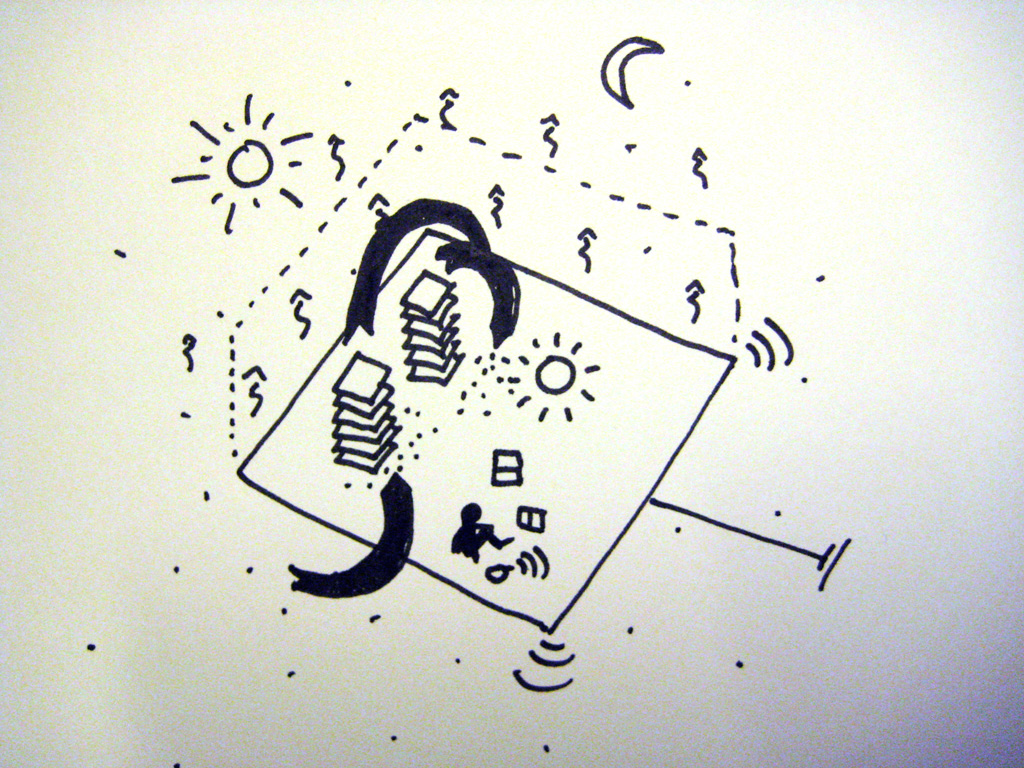Note: this is the bibliography that helped us set up the research project, taken out from the I&IC -Preliminary Intentions document. We’ll certainly complete it along the way so as possibly document in more details some of the most important resources later (i.e. Clog, 2012). This means that this list might change along the way for our own cross posts references.
-
Bibliography, Webography
Augé, M. (1992). Non-lieux, introduction à une anthropologie de la surmodernité, Le Seuil.
Bar, F. Pisani, F., & Weber, M. (2007). Mobile technology appropriation in a distant mirror: baroque infiltration, creolization and cannibalism. Prepared for discussion at Seminario sobre Desarrollo Económico, Desarrollo Social y Comunicaciones Móviles en América Latina. Convened by Fundación Telefónica in Buenos Aires, April 20–21, 2007.
Banham, R. (1984). The architecture of the Well-Tempered Environment, The University of Chicago Press.
Bathia, N. & al. (2013). Bracket [goes soft], Actar.
Blum, A. (2012). Tubes: A Journey to the Center of the Internet.
Bourriaud, N. (2009). Radicant, pour une esthétique de la globalisation, Denoël.
Branzi, A (2006). No-Stop City: Archizoom Associati, HYX.
Bratton, H.B. (2016). The Stack, On Software and Sovereignty, MIT Press.
CLOG, (2012). Data Space, Clog online.
Divers (2002). Living in Motion, Design und Architektur für flexibles Wohnen, Vitra Design Museum.
Donaghy, R. (2011). Co-opting the Cloud: An Architectural Hack of Data Infrastructure. Graduate thesis work.
Glissant, E. (1990). Poétique de la relation. (Poétique III), Paris: Gallimard.
Himmelsbach, S. & Mareis, C. (2015). Poetics and Politics of Data. The Ambivalence of Life in a Data-Driven Society. Christoph Merian Verlag.
Hu, T.-H. (2015). A Prehistory of The Cloud, MIT Press.
Léchot-Hirt, L. (2010). Recherche-création en design. Modèles pour une pratique expérimentale. Genève: Métis Presses.
Mejias, U. A. (2013), Off the Network, Disrupting the Digital World. University of Minnesota Press.
Open Compute Project/Facebook. (2012). Deploying OCP Hardware in a Collocated Facility.
Rifkin, J. (2012). La troisième révolution industrielle. Comment le pouvoir latéral va transformer l’énergie, l’économie et le monde, Les liens qui libèrent.
Serres, M. (2011). Habiter, Le Pommier.
Shepard, M. (2011), Sentient City: Ubiquitous Computing, Architecture, and the Future of Urban Space, MIT Press.
Ulrberger, A. (2013). Habiter les aéroports, Paradoxe d’une nouvelle urbanité. Métis Presses.
Varnelis, K. (2009). The Infrastructural City: Networked Ecologies in Los Angeles. Actar.
Varnelis, K. (2007). ETHER : One Wilshire, In Sumrell, R. & Varnelis, K., Blue Monday: Stories of Absurd Realities and Natural Philosophies, Actar, pp.48-89.
Weiser, M. (1991). The Computer for the 21st Century. Scientific American, vol. 265, no. 3, pp. 66–75.



